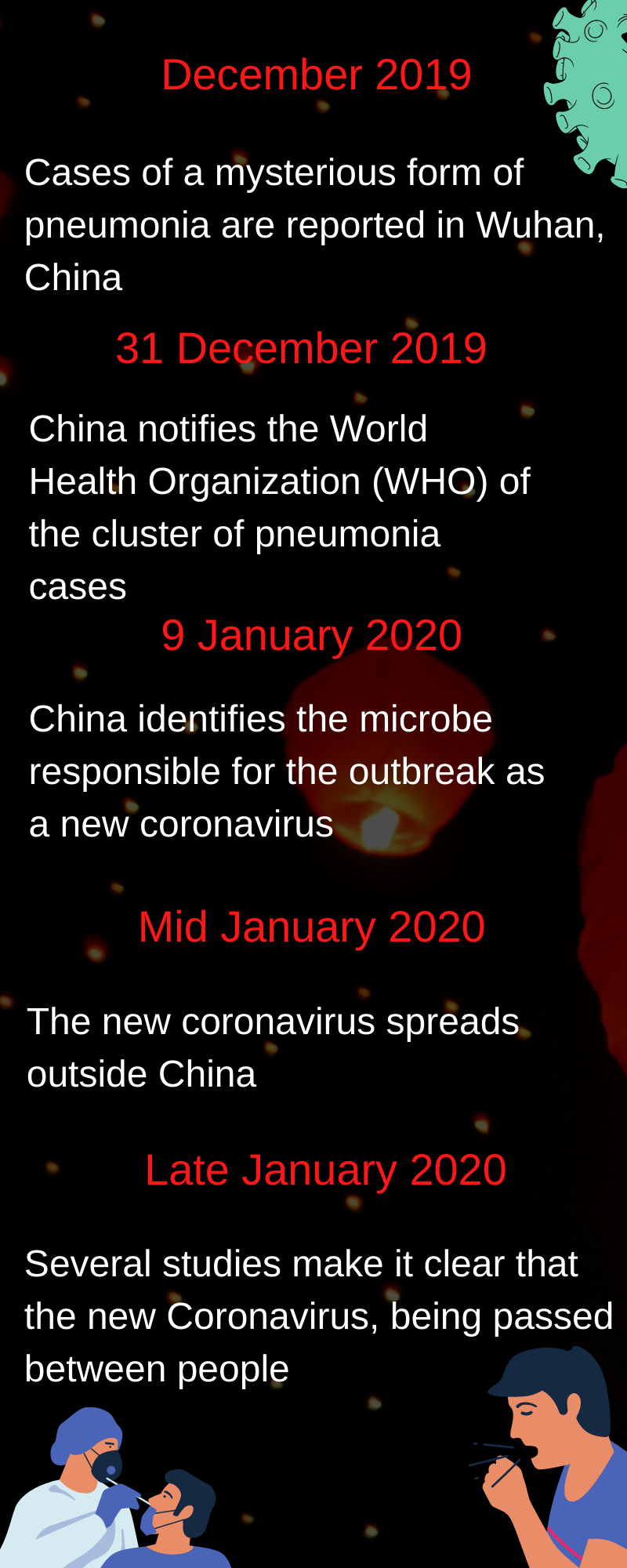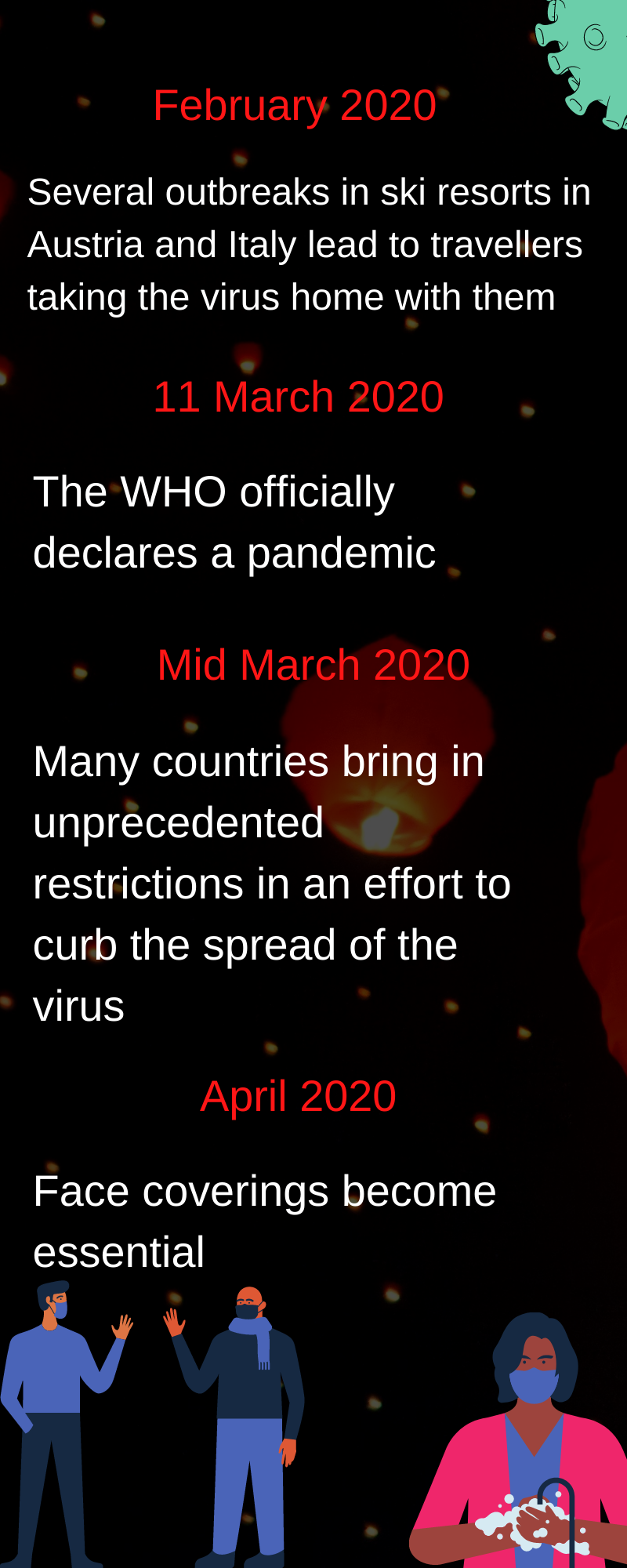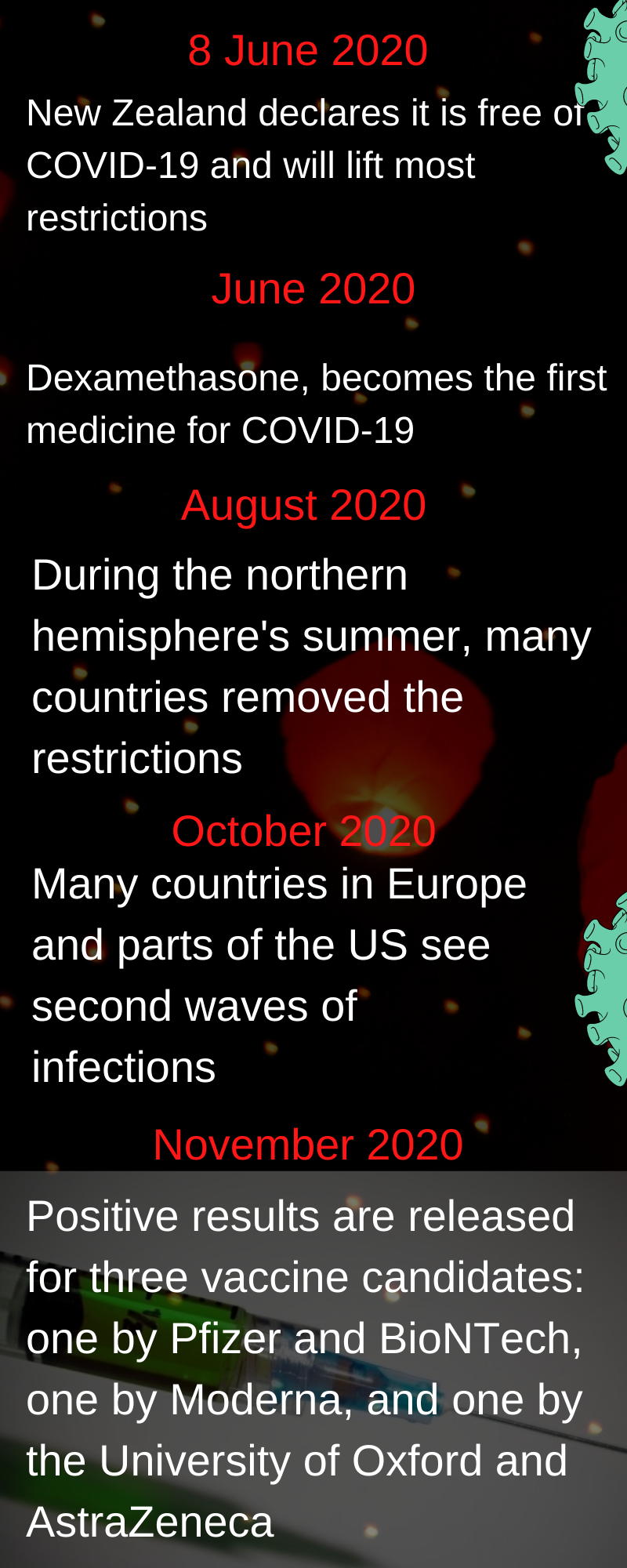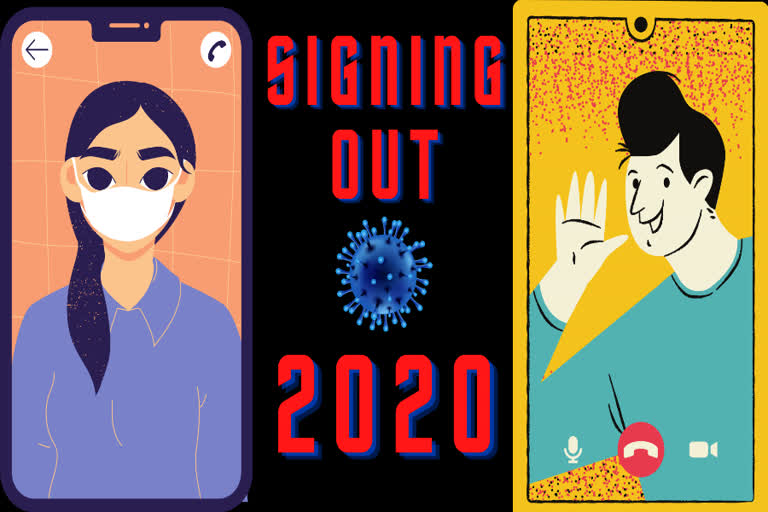New Scientist, UK: Goodbye to 2020 and Corona. Hoping 2021 makes our lives Corona free.



December 2019
Cases of a mysterious form of pneumonia are reported in Wuhan, China. Doctors rule out some known viruses as the cause, suspecting it is a new microbe. Some of those affected work at Huanan Seafood Market, where live animals are also sold.
31 December 2019
China notifies the World Health Organization (WHO) of the cluster of pneumonia cases. At this stage, officials say there is no clear evidence of transmission between people. Huanan Seafood Market is closed for disinfection the following day.
9 January 2020
China identifies the microbe responsible for the outbreak as a new coronavirus – the same kind of virus that caused the deadly SARS outbreak of 2002 to 2004. Soon, researchers publish the first draft of the new virus's genome, an initial step towards making genetic tests.
Mid-January 2020
The new coronavirus spreads outside China, with cases reported in Thailand, Japan, and South Korea. Those infected had caught the virus in Wuhan, but some reported that they hadn't been in contact with animals, suggesting that the virus is now passing between people.
Late January 2020
Several studies make it clear that the new coronavirus, probably originating in animals, is now being passed between people. The WHO declares a public health emergency of international concern on 30 January, as 18 countries beyond China confirm cases of the virus.
February 2020
Several outbreaks in ski resorts in Austria and Italy lead to travelers taking the virus home with them. One resort, Ischgl in Austria, was linked to thousands of cases in 45 countries. Hasty evacuation of some resorts in crammed buses may have added to the spread.
11 March 2020
The WHO officially declares a pandemic. Cases are rising so quickly in northern Italy that some hospitals are starting to run out of ventilator beds and have to draw up rules for how to allocate them. Meanwhile, hospitals in New York teetered on the edge of their capacity.
Mid-March 2020
Many countries bring in unprecedented restrictions in an effort to curb the spread of the virus, such as ordering people to stay at home unless they must travel for emergencies, to do essential work, or to buy food, medicines, and other supplies.
April 2020
The tide turns in favor of the public wearing face coverings, which had been contentious outside some Asian countries in the early days of the pandemic. The US Centers for Disease Control and Prevention recommend that people wear masks when possible.
8 June 2020
New Zealand declares it is free of COVID-19 and will lift most restrictions, showing that countries can eliminate the virus with strict enough measures – although it has since seen cases imported from elsewhere that required implementing further lockdowns.
June 2020
Dexamethasone, an existing steroid drug that quells a counterproductive response by the immune system, becomes the first medicine for covid-19 shown to save lives. The antiviral agent remdesivir also shows signs of speeding recovery, though this remains inconclusive.
August 2020
During the northern hemisphere's summer, many countries see much lower rates of infections and deaths, and many restrictions are eased. In the UK, the government funds discounts on food bills to give people an incentive to go to restaurants.
October 2020
Many countries in Europe and parts of the US see second waves of infections that eclipse their first waves, and new lockdowns or tighter social restrictions are brought in. But the state of Victoria in Australia declares victory over the virus when non-imported cases drop to zero.
November 2020
Positive results are released for three vaccine candidates: one by Pfizer and BioNTech, one by Moderna, and one by the University of Oxford and AstraZeneca. The first two are based on mRNA, which tells cells to make the virus's surface protein, triggering an immune response.
Rise of the face mask
Although more common in many Asian countries, masks and face coverings were an unusual sight in most places before the pandemic. Now, despite initial uncertainty over their efficacy and a desire by some people not to be "muzzled", they are near-ubiquitous, as seen in this line of New Yorkers on 24 October 2020 waiting to cast an early ballot for the US elections.
(c) 2020 New Scientist Ltd.
Distributed by Tribune Content Agency, LLC
Also Read: 2020: Nobel Prize Winners



